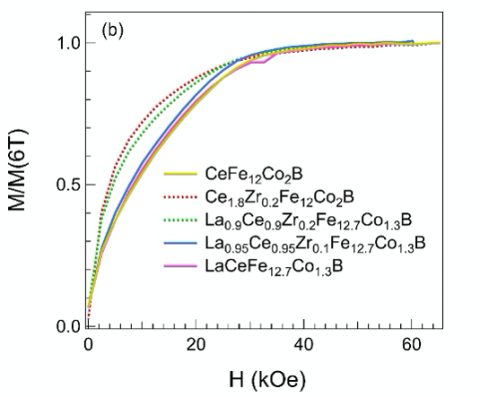
CMI researchers at Oak Ridge National Laboratory and Ames Laboratory conducted the activity for this highlight
Innovation
Alloys based on Ce2Fe14B may offer energy products at or exceeding 30 MG-Oe at greatly reduced cost and criticality relative to Nd2Fe14B.
Achievement
First principles calculations and associated experimental work find a series of inexpensive alloys with potential as strong permanent magnets
Significance and Impact
Alloys may become new low-cost permanent magnets and ultimately substitute for some of NdFeB market
Hub Target Addressed
Win industry adoption of three technologies related to materials substitution for rare-earth magnet materials

L. Yin, J.Q. Yan, B.C. Sales and D.S. Parker, “Critical Element Free Permanent Magnet Materials Based on Ce2Fe14B,” Phys. Rev. Appl., in press (2022). ORNL Provisional patent 63/344,070 filed May 20, 2022.
